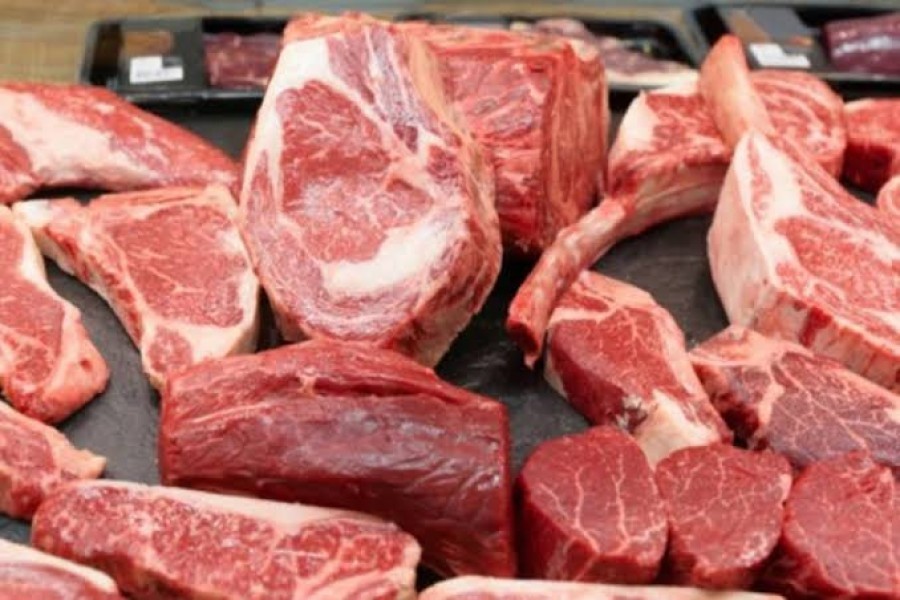
Published :
Updated :

Unlike in many countries, buying fresh raw meat requires a lot of skill in Dhaka markets. Dishonest sellers don't want to miss the smallest chance to apply their sleight of hand. Their dexterity in mixing meat-coated bones with the solid meat chosen by a client is amazing. The deception doesn't end here. Passing buffalo meat as beef is a common practice; it is targeted mostly at the gullible buyers. The butchers-cum-meat-sellers at neighbourhood markets are normally found resorting to these corrupt practices. Putting sprinkles of fresh blood on stale meat is another kind of deceit. It makes the meat look fresh.
Thanks to the availability of beef and mutton at super-shops, even novice buyers can nowadays purchase meat without worry. Yet headaches do not vanish altogether. There have been allegations that a section of these high-end shops also sell adulterated meat, especially those chemically treated.
People familiar with the meat episode continue to underscore the need for putting in place government-appointed fulltime meat inspectors.Over the years, a section of health-conscious people have been seriously pressing the idea of abattoirs or slaughterhouses for this city. It's stunning to find that a large meat-loving capital like Dhaka has been making do without abattoirs. The issue came to the fore during the recent Eid-ul-Azha. Its main ritual centres round slaughtering of sacrificial animals. Like in the previous years, slaughtering of cows, goats etc in the open was a common spectacle also this year.
The number of slaughtering was smaller this Eid, and the wastes from the edible meat were cleared by evening. But the odour from the unflushed stale blood and offal leftovers hung in the air till late into the night. The city dwellers cannot be fully relieved of these nuisances unless sufficient numbers of abattoirs are put into operation.
For slaughtering a section of butchers this year, on being assigned by many hygiene-conscious people, prepared makeshift slaughterhouses in remote parts of the capital, so that refuseof the slaughtered animals did not vitiatethe air during the corona pandemic.Viewing the process as a tentative prelude to the setting up of permanentabattoirs, many city residents welcomed the initiatives. The chief reason they have supported the venture, apparently, is the willingness of conscious Dhaka people to keep themselves free of the hazards caused by eating meat bought from markets. With abattoirs in place and market inspection continuing unabated, the scourge of unhealthy meat and meat products is set to disappear for good.Few Muslims know the fact thatscores of Middle Eastern and African Muslim countries have long been using abattoirs for slaughteringanimals and processing meat.
Perhaps there are no meat-eating developed nations in the world which do not have specialised slaughterhouses. Most of these countries have theirs which are fitted with state-of-the-art technologies. It's the slaughterhouses operated by trained butchers, veterinary experts and other relevant personnel which can ensure hazard-free meat.
Given the satisfaction expressed by the two Dhaka City Corporation high-ups over the quick disposal of post-'qurbani' animal waste by evening this Eid, the dearth of sufficient modern abattoirs came to the fore once again. With one such time-befitting slaughterhouse already operating and three others being fast readied in the DNCC area, the northern Dhaka is set to enter a new era of slaughtering and meat processing. The DSCC also doesn't lag behind. Against the backdrop of kitchen markets allegedly being flooded with manually processed hazardous meat, the authorities have reportedly expedited the completion of semi-automated slaughterhouses.All said and done, the construction of adequate number of abattoirs comes up as a basic urban imperative for Dhaka.


 For all latest news, follow The Financial Express Google News channel.
For all latest news, follow The Financial Express Google News channel.